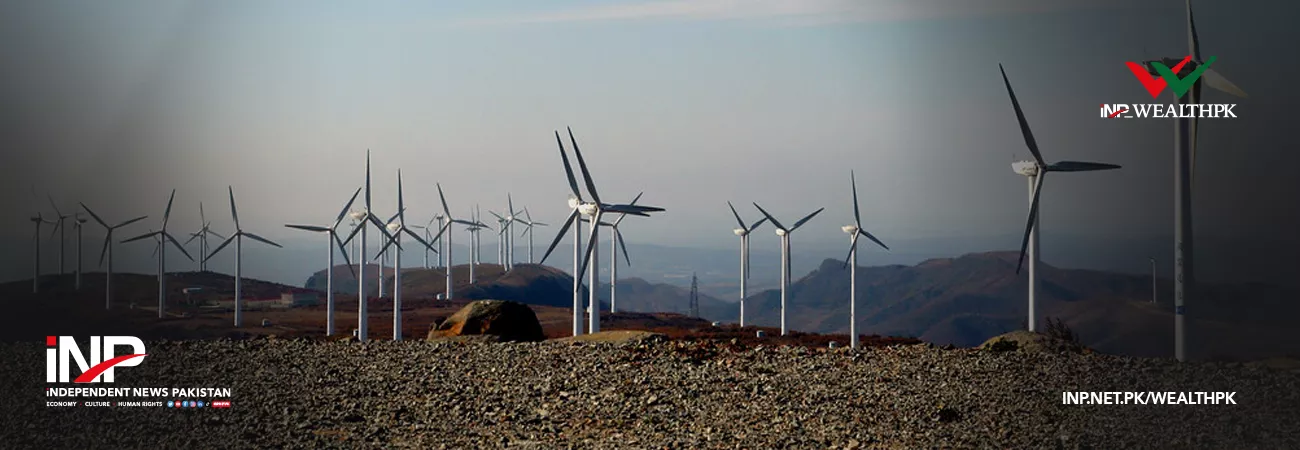INP-WealthPk
Ayesha Saba
Pakistan’s wind energy potential begins to be realized under the CPEC, which is providing a boost to the country’s clean energy sector and helping to reduce its reliance on the fossil fuels. As more projects are developed, wind energy is expected to become an increasingly important source of electricity for Pakistan in the coming years, reports WealthPK.
Assistant Director Alternate Energy Development Board (AEDB) Mohammad Yasin told WealthPK, “Compared to the other developing countries, Pakistan is facing a serious electricity shortfall. The majority of rural areas have no access to electricity and even the urban centres connected to the national grid are facing long hours of load-shedding.”
“At the moment, even massive consumption of indigenous and imported non-renewable resources now seems to be inadequate to meet the energy requirements of the country. We have an upfront task to encourage local and foreign investment in distributed renewable energy (DRE) generation. The building of micro-hydro dams and solar and wind power plants in KP, Punjab, and Sindh provinces, respectively, is the result of this focus,” said the AEDB assistant director.
“At the moment, the total wind power capacity installed in Pakistan is 287MW, while 306MW wind power projects are in the development and planning phase. Pakistan has a wind power potential of around 174 GW,” said Yasin. “In order to harness the wind potential and encourage investment in the wind power projects, the government has offered various incentives which include attractive tariff rates, availability of land at cheaper rates, wind risk, guaranteed power purchase, zero-rated import duties on equipment and exemption of income tax and sales tax,” he continued.
Sharing details, he said, “The Government of Pakistan has tasked the Alternative Energy Development Board of Pakistan (AEDB) with generating 6% of the total national power generation through the renewable energy technologies by the year 2030.” “To boost the manufacture of wind and solar equipment in Pakistan, the government is also planning to propose a five-year tax exemption for the manufacturers. This will help increase the renewable share significantly,” Yasin told WealthPK.
Talking to WealthPK, Research Associate at the Centre of Excellence-China Pakistan Economic Corridor (CoE-CPEC) Adnan Khan said, “Pakistan is beginning to reap the benefits of Chinese investment in renewable energy infrastructure. The major success of Pakistan’s growth in wind energy is Jhimpir-Gharo Corridor.”
“With the majority of wind installations in this region along with the first wind plant of Pakistan, this region still holds the potential for growth of the wind market. Gharo-Jhimpir wind corridor in Sindh, a 180km (110 mile) stretch of coastal land, has the potential to produce 11,000MW electricity through the wind power. However, wind turbine (WT) and its installation is considered a major challenge. Presently, due to the economic boom of Pakistan as a regional power under the CPEC, the country needs to meet the energy shortage by utilizing extensive wind energy capacities available in Pakistan,’’ Adnan said.
Credit: Independent News Pakistan-WealthPk




